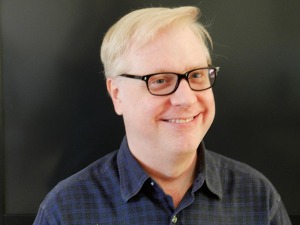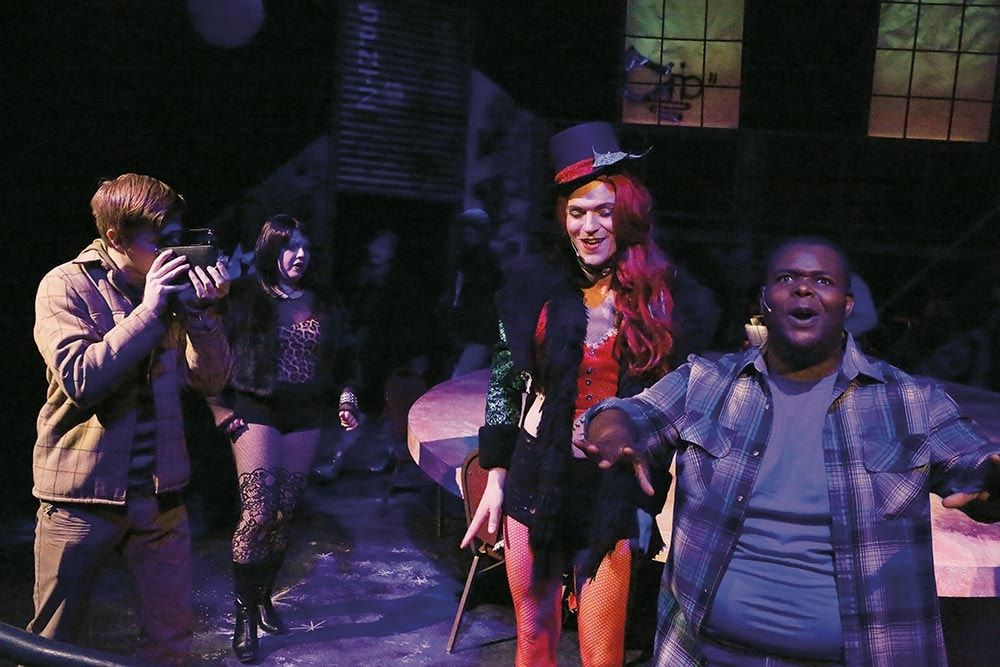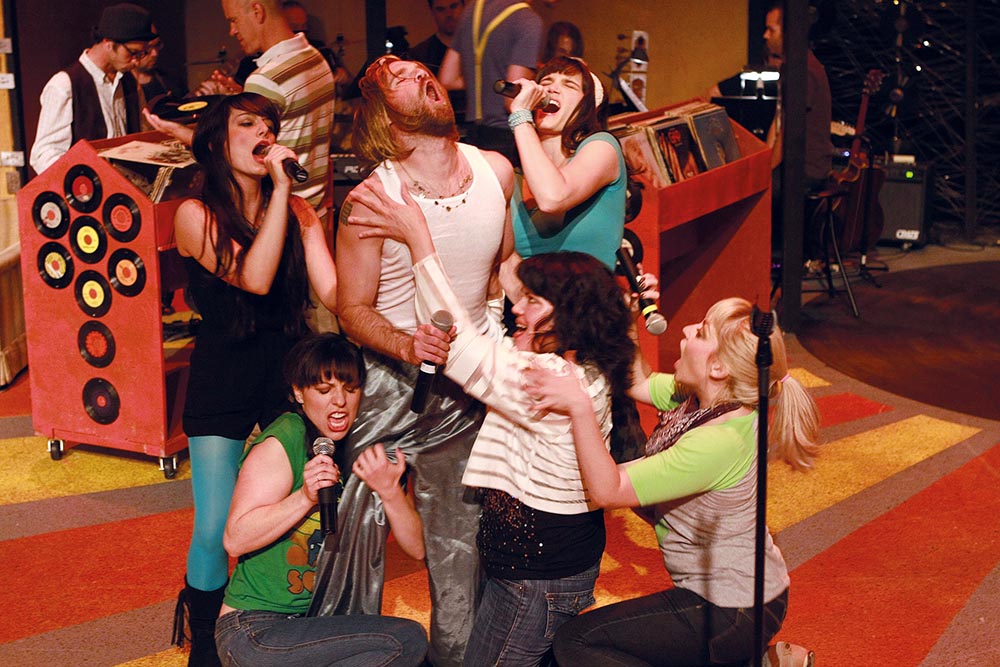
In person, Miller—a mild-mannered, bespectacled 50-year-old with yellow-blonde hair that gives him an agreeably nerdy, Simpsons-esque look—is no Harold Hill, though he does suggest another very recognizable type: the effusive, obsessive, opinionated musical theatre superfan (“I loooooooove that show” is not an exaggerated transcription of a typical Miller quote, though it hardly captures the many registers that his “love” warbles through). But instead of simply trading bootleg recordings and arguing online about which musicals were ruined out of town, like the show queens we know (or are), Miller is actually staging his dream projects and writing books about them.
Not all his productions are home runs—his paid but non-Equity casts appear to run the gamut from rising talents to spirited amateurs; and he stages each show for just 12 performances over four weeks, though he rehearses for as many as six or seven weeks (all the better for “digging down deep inside” the material he directs, he says). But by staging contemporary musicals of wildly varying styles and pedigrees, with attention to detail but minus needless frills in an intimate setting, and by advocating for them tirelessly, even quixotically, Miller is, in his quietly ornery Midwestern way, advancing and reifying the American musical-theatre form as it has come kicking and screaming into the 21st century.
“He’s an anarchist, and I applaud him, out there waving his protest sign,” says Amanda Green.
Miller was raised in St. Louis on a standard diet of cast albums and school theatre productions. Then he went to Harvard, which had no theatre program, and where the joke about the music program is “that music was meant to be seen and not heard there, because it was all musicologists.” Miller did his share of this kind of study, with a self-directed focus on musical theatre, but he also, much like other Harvard grads—Peter Sellars, Bill Rauch—took full advantage of the “Wild West” atmosphere that the absence of a formal theatre program inspired.
“There were 35, 40 productions going up every semester in every imaginable space, everything from Antigone to Dames at Sea, and it was wild and awesome,” Miller says over lunch before a closing-weekend performance of Rent. He wrote and staged his own shows at Harvard and music-directed Pippin.
After college, his former high school theatre instructor called and asked him to help start a community theatre in St. Louis, so Miller returned to his hometown and helped run the CenterStage Theatre Company for a number of years. But he eventually chafed at the theatre’s relatively staid programming.
“CenterStage did Best Little Whorehouse and How to Succeed, which were awesome, but they didn’t wanna do the kind of stuff I wanted to do—they didn’t wanna do Assassins,” Miller recalls. That pitch-black Sondheim show was accordingly among the first non-original, non-revue musicals staged by the new company Miller founded in 1991. What’s interesting about New Line’s early years is that the kind of musical the company has become identified with—essentially, shows stocked with varying proportions of the ingredients Miller celebrated in his 2011 book Sex, Drugs, Rock & Roll, and Musicals—was not thick on the ground in the early ’90s. At the time, the form was still in a post-’80s, post-British-megamusical doldrums. When Rent came along in 1996, the new American musical got its biggest youthful shot in the arm since Hair. In the ensuing decades, and especially in the years since 2006’s Spring Awakening, the number of rock musicals—and, more important, musicals with a distinctly post-Rodgers & Hammerstein moral sensibility—has grown to the point that Miller’s wish list is longer than a Cole Porter patter song.
It almost seems, in retrospect, that Miller built his theatre in anticipation of the flood to come, though that ascribes to him prophetic powers not even he would claim. In any case, he and his tiny theatre were ideally positioned for what he now routinely calls—in gleeful defiance of the received wisdom that the American musical reached its acme in the years between Oklahoma! in 1943 and Fiddler on the Roof in 1964—the musical’s new “Golden Age.”
As he put it in a blog post last year, “I feel like the art form is stretching itself even more than it has before, maybe reaching its highest level yet…I don’t think we’ve had a period this fertile and this eclectic since the late ’60s and early ’70s…The musical is on fire right now. And it shows no signs of slowing down.”
Laurence O’Keefe, the composer and lyricist of Bat Boy—who ventured onto Broadway with Legally Blonde and is currently represented Off Broadway by Heathers, co-written with Reefer Madness’s Kevin Murphy—counts himself impressed by Miller’s enthusiasm and dedication, and recounts a spirited back-and-forth with Miller about which version of Bat Boy’s score to use at New Line (“When people ask, I always say: Use the London version,” says O’Keefe). But when asked about Miller’s “Golden Age” claim, O’Keefe gives a potted history of the American musical from the Jazz Age to the MTV era and beyond before concluding, “We are definitely in at least a Gilded Age, and maybe we are in a Golden Age. Producers are starting to remember that they have to delight the audience. Shows like The Drowsy Chaperone, In the Heights, Avenue Q—those shows are delightful, and they’re as good as anything from the ’50s.”
Pointing to another sign of the form’s health, Miller says, “I love how many rock and pop artists want to write a musical—I don’t think a lot of ’em are great, but some of ’em are great.”



